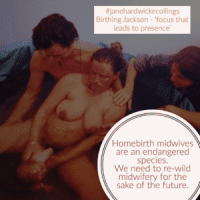MINMIA BLOG SERIES 2 (CONT): ON PLACENTA
There’s a lot to be said about placentas, ‘mother cakes’, ‘Tree of Life’, ‘grandmothers’…..
Making a homeopathic remedy from placenta (Look up Jane Hardwicke Collings Placenta)
Making a tincture from placenta
…and how they are born, by what measures and when. ….
In other words, the third stage of labour or as Whapio Diane Bartlett from The Matrona calls it, which I so prefer – Completion. Which is preceded by a few other stages following birth or in her words – Emergence. It goes Emergence, The Return, Acquaintance, Communion and Completion – the birth of the placenta.
If you are a birthworker you really must familiarise yourself with Whapio’s holistic stages of birth.
This part of birth is one of the most rushed and most fragile. It is the ‘space in between where the magic happens’.
The blueprint is for the release of a huge surge of oxytocin, the highest level of oxytocin a woman ever has in her life. Its purpose is to flood the mother and the baby, who’s cord should still be connected to the placenta, with the hormone of love to facilitate bonding and to contract her womb, to detach the placenta so it can be born. And so many more purposes and this only happens if the mother and baby are not disturbed. If they are disturbed, by questions or instructions or other people’s hands and people fiddling with the baby, cord or womb, then this peak of oxytocin doesn’t happen, and the mother and baby are robbed of what Mother Nature designed as best for life. Mostly what happens is that women are given an intramuscular injection of synthetic oxytocin which contracts the womb, but doesn’t give the mother and baby the love hit, and the placenta is then usually pulled out by ‘gentle’ cord ‘traction’.
One of the other significant things that happens after the baby is born is that blood continues to flow through the cord and the baby receives a further 10-50% more of its own blood, and this process it seems is regulated by the baby[i], that is if the cord isn’t cut straight away, which unfortunately continues to be common practice even though there is plenty of evidence to not do so.
There are many studies about the effects and differences between physiological third stage and active management of the third stage, and as always with these things you need to do your research to make your deci- sions and not get bullied into a policy. Sara Wickham is a great writer on all aspects of birth
And so is Sarah Buckley, for the benefits of a natural or physiological third stage. If you want to get the whole picture about it all read Rachel Reed’s writing here. If you love placentas, here’s two excellent books:
Placenta the Forgotten Chakra by Robin Lim Placenta: the Gift of Life by Cornelia Enning
Recent Posts
WE ARE ALL MENSTRUAL ACTIVISTS!
DOWNLOAD PDF VERSION WE ARE ALL MENSTRUAL ACTIVISTS! One of the popular articles I have ever written is the The Spiritual Practice of [...]
AUTUMN WOMAN, HARVEST QUEEN
DOWNLOAD PDF VERSION AUTUMN WOMAN, HARVEST QUEEN After Mother, before Crone... is the time of the Maga – the Matriarch, the Enchantress, the [...]
HAPPY INTERNATIONAL MIDWIVES DAY!
DOWNLOAD PDF VERSION HAPPY INTERNATIONAL MIDWIVES DAY! Happy International Midwives Day! Firstly, and really importantly, I want to say thank you to all [...]
THE POINT OF NATURAL CHILDBIRTH
DOWNLOAD PDF VERSION THE POINT OF NATURAL CHILDBIRTH My daughter, Ellie, seventeen at the time, came home from school one day telling me [...]
HONOURING RITES OF PASSAGE IN A WOMAN’S LIFE
DOWNLOAD PDF VERSION HONORING RITES OF PASSAGE IN A WOMAN’S LIFE The Four Phase Feminine Way Spring 2013 When viewed as a whole, [...]
ECSTATIC BIRTH
DOWNLOAD PDF VERSION ECSTATIC BIRTH Ecstatic means to stand outside oneself, to be in an other than usual state of consciousness. Spring 2013 [...]
Visit the Shop




















